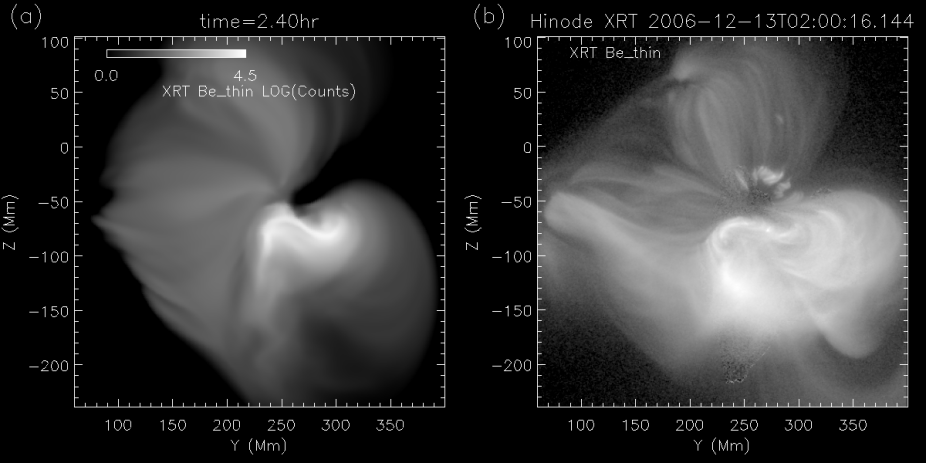We present an magnetohydrodynamic (MHD) simulation of the coronal mass ejection (CME) on 13 December 2006 in the emerging $\delta$-sunspot active region 10930, improving upon a previous simulation by Fan (2016) as follows. (1) Incorporate an ambient solar wind instead of using a static potential magnetic field extrapolation as the initial state. (2) In addition to imposing the emergence of a twisted flux rope, also impose at the lower boundary a random electric field that represents the effect of turbulent convection, which drives field-line braiding and produces resistive and viscous heating in the corona. With the inclusion of this heating, which depends on the magnetic field topology, we are able to model the synthetic soft X-ray images that would be observed by the X-Ray Telescope (XRT) of the Hinode satellite, produced by the simulated coronal magnetic field. We find that the simulated pre-eruption magnetic field with the build up of a twisted magnetic flux rope, produces synthetic soft X-ray emission that shows qualitatively similar morphology as that observed by the Hinode/XRT for both the ambient coronal loops of the active region and the central inverse-S shaped ``sigmoid" that sharpens just before the onset of the eruption. The synthetic post-flare loop brightening also shows similar morphology as that seen in the Hinode/XRT image during the impulsive phase of the eruption. It is found that the kinematics of the erupting flux rope is significantly affected by the open magnetic fields and fast solar wind streams adjacent to the active region.

(a) Synthetic Hinode/XRT image at the time a few minutes before the onset of the eruption produced by the MHD simulation of the 2006 December 13 coronal mass ejection of active region NOAA 10930, compared with (b) the observed Hinode/XRT image about 3 minutes before the onset of the observed X-class flare. The simulated pre-eruption magnetic field with the buildup of a twisted magnetic flux rope, produces synthetic soft X-ray emission that shows qualitatively similar morphology as that observed by the Hinode/XRT for both the ambient coronal loops of the active region and the central inverse-S shaped "sigmoid" that sharpens just before the onset of the eruption.